The Story of the American Expeditionary Forces |
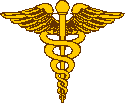 Medical Corps |
AEFCASUALTY HANDLINGPROCEDURES |
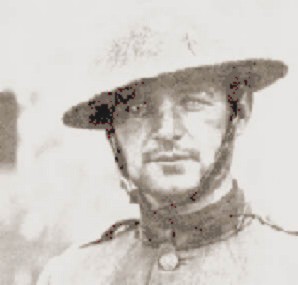
Lt. Col. William "Wild Bill" Donovan
Wounded October 14, 1918

|
AEF Planners for hospitals containing 200,000 beds and advance hospitals with 25,000. . .At the time of the Armistice there were 145,000 members of the AEF hospitalized. During the big offensives, the handling of the wounded was organized on a huge scale, and in a routine fashion. Writing from his bed in a Paris hospital on October 23, 1918, Lt. Col William J. Donovan of the famous Fighting 69th [165th Infantry of the 42nd Division] described the process to his wife. 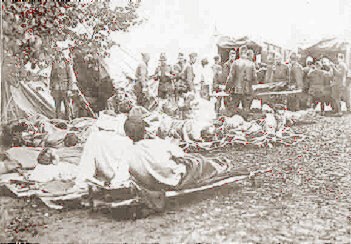 Battalion Casualty Clearing StationI will tell you in detail what is done with human baggage from the first aid station on. At the battalion first aid station they tied a tag to me: G. S. W. right knee, Corbet, M.O. meaning I had received a gun shot wound in the right knee. [Dr. Corbet was the Medical Officer.] From there I was carried on a stretcher about 1 1/2 kilometers to the Regimental dressing station where my wound was dressed and I was placed in an ambulance. A tough 3 kilometers ride over shell-torn roads to the Field Hospital. I was hauled out and placed on the ground. It then being determined that there was no immediate need of an operation I was sent on the Mobile Unit. This was about 4 kilometers further back, and all these rides were damned uncomfortable. 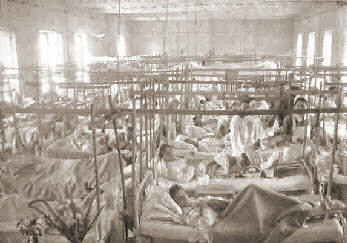 Crowded Field HospitalAt this hosptial I was taken in during a pounding rain. They took a complete record of my name, regiment, rank, nature and date of wound. Then they stripped me and rubbed me over with a warm sponge. It being the first in many days it was very welcome. Then there was an anti-tetanus injection. Then on a stretcher and put in a row in the waiting room off the operating room awaiting my turn. I waited there and with eyes closed tried to ge a little response. . . Placed on the operating table they saw no need for an operation and putting my leg in a splint turned me into a ward. I was put between sheets. Think of it! Beside me was an officer shot through the stomach and dying, across two officers coming out of ether and asking the nurses to hold their hands or smooth their brows. In the next ward [was] a bedlam of delerium. . . 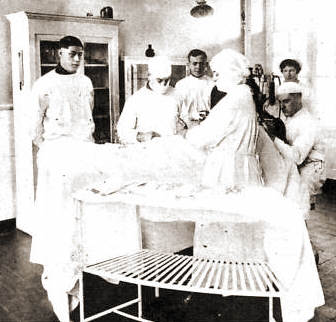
Operating Suite at AEF HospitalPancakes for breakfast and then prepared for evacuation. Our cards containing our history were attached, and we were loade into ambulances and sent to Evacuation No. 10. It was pouring rain and the road was terrific. I had with me several badly wounded officers who groaned the whole time, and I was not very comfortable, myself, so that on the road thing were not happy. At evacuation hospital we were handled like pieces of freight. Put on a rack, and when your turn came put in front of a checker who carefully noted your record. then to bed. Iwas given a room in an old French barracks hospital. . .  American Hospital TrainTwo days here, the hospital overflowing, and then we were put on a French train, sixteen ofus, officers and men in a car. The stretchers and slings were most uncomfortable. We had coffee without milk, canned corn beef heated and nothing else. I passed it all and dug up some YMCA crackers I had been saving. We had a French orderly on the train. An old Breton, most obliging. He knew no French yet always knew what the men wanted. All night long this patient fellow worked, always awake and always smiling. 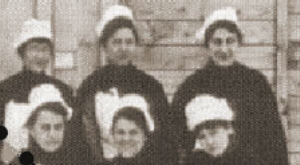
American Volunteer NursesEarly in the morning we arrived here. I have a room with another officer. This was once the American something club for American girls studying art. It is in the Latin Quarter [of Paris]. |
|
Sources and thanks: The Donovan letter is quoted in Over Here by Frank Friedel. Regular contributor Ray Mentzer provided the Photos. MH |
To find other Doughboy Features visit our |
Membership Information  Click on Icon |
For further information on the events of 1914-1918
visit the homepage of |
Michael E. Hanlon (medwardh@hotmail.com) regarding content,
or toMike Iavarone (mikei01@execpc.com) regarding form and function.
Original artwork & copy; © 1998-2000, The Great War Society